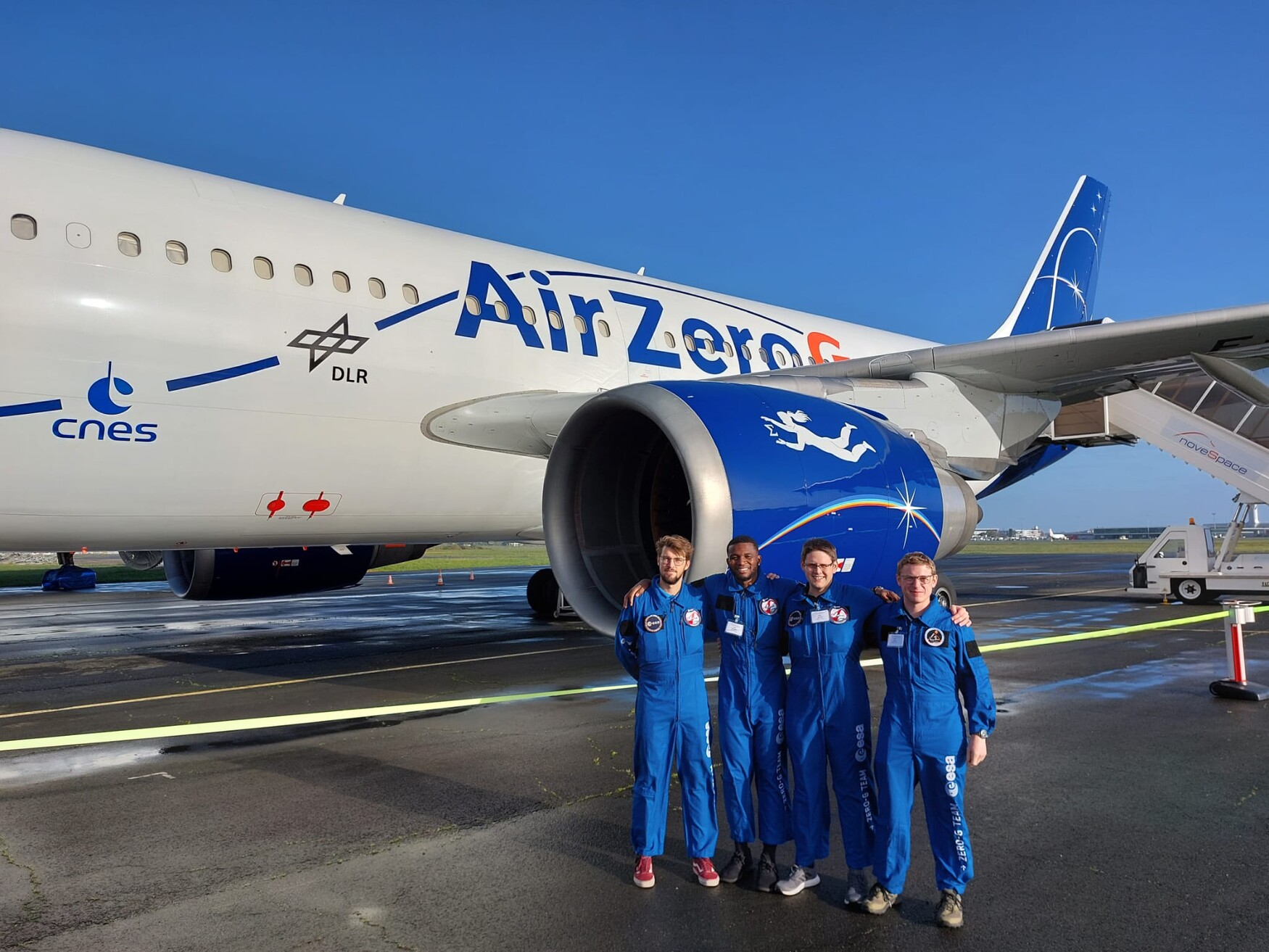Breadcrumbs
- Home
- MD/PhD Program
- News
- Faces of Temerty Medicine: Kwasi Nkansah
Faces of Temerty Medicine: Kwasi Nkansah

For Kwasi Nkansah, the sky is far from the limit when it comes to research. The fourth-year University of Toronto medical student recently travelled to France to test a new device that could one day measure cardiac output in space. As part of that study, Nkansah took part in parabolic flight microgravity tests with the European Space Agency. He spoke with writer Erin Howe about his work and the impact space medicine can have on Earth.
Tell me about your research.
We know that when people go into space, their hearts can become deconditioned. It’s been a difficult problem for scientists to study for a few reasons: the number of individuals that have been to space is relatively small; weight restrictions limit the equipment astronauts can take with them; and astronauts would have to do additional training to use the necessary tools for this kind of study.
I’m part of a group working with the European Space Agency that is testing a device called Starling SV, which will measure cardiac output and how much blood is pumped with each heartbeat when we go from an environment with gravity — like on Earth — to one with microgravity — like in space. We’re also looking at how cardiac output changes with the amount of time spent in space.
First, we had to make sure our device was safe on Earth. Then, we had to validate it for use in space. To do this, I went to Bordeaux, France to test the device during parabolic flight, which simulates microgravity in 30-second increments. We hope to publish our findings later in 2023.
Have you always been interested in space?
My interests in space and medicine developed almost in parallel. When I was in grade 11, I was part of a specialist high school major program for health care. Around that time, I was also reading Ray Bradbury’s The Martian Chronicles. I’d often fall asleep reading and my parents would find me, book in hand, and turn the light out for me.
But I don't think I married the ideas together until midway through my undergraduate degree at McMaster University, when I was taking astronomy and physics courses. At that point, I was doing high altitude physiology research because I was interested in the extremes of the human body and I realized that space is one of the most extreme environments. Before I began my studies in the MD Program, I completed a Master of Science in Aerospace Physiology and Medicine through the International Space University.

How have you found ways to share this interest with your fellow medical students?
When I began the MD Program, I met Mitchell Segal and Roslyn Mainland, who were also interested in aerospace medicine. We formed the Aerospace Medicine Club, which has now grown to about 30 members in our Facebook group.
We’ve hosted talks by members of the aerospace medicine community like Joan Saary, a professor of medicine who also works in occupational health at the Canadian Space Agency, David St. Jacques who practices rural medicine in Quebec and is one of the most recent Canadian astronauts to travel to the International Space Station, and NASA flight surgeon Kris Lehnhardt.
Several of us also belong to a group called the Canadian Society of Aerospace Medicine. I’m also part of another group called C-Stars, which is made up of medical students, residents and undergraduate students from across Canada.
How does learning about medicine in space impact how we do things on Earth?
Some technologies developed for spaceflight end up inadvertently helping us here on Earth. I think Canada excels in this area because we’re home to many remote communities. Some of the challenges astronauts face in space might have parallels on Earth, like working with limited access to resources or contending with large distances to a trauma centre, for example.
Many Canadian astronauts happen to be doctors and our country contributes aerospace medicine expertise to the world. A Canadian company also invented the Hexoskin suit, a remote-monitoring body suit that can measure basic medical parameters and has a built in ECG.
Teflon and LED lights are also unexpected space-spinoffs that have become intertwined with our lives.
You’re also part of a team that’s been awarded a spot in the semi-finals of the Canadian Space Agency’s Deep Space Challenge. What is your team working on for that competition?
My team is called Pulsence and it’s a collaboration with a colleague, Roxy Fournier, who's based in Vancouver. We’re working on a solution to address a gap in care for people who experience head trauma injuries and who may not have access to CT scans based on their geography.
CT scanners are expensive and the training to use them also limits their availability in some parts of the country. We want to create a device that leverages the technology used in pulse oximetry monitors to detect brain bleeds around the meninges, the membranes that cover and protect the brain and spinal cord. This device could help triage which head injuries need to be expedited to a trauma centre and which ones could be dealt with on-site.
We’ve been awarded $50,000 to begin developing our idea. So far, we’ve been working on tissue phantoms that mimic the optical properties of the skull, and lasers that can penetrate the skull to give us an idea whether there’s blood around the layers of tissue that cover and protect the brain and spinal cord. We'll be working on prototyping this device over the next two years.
News


